Anaerobic Digestion Tank Liners
Enviroseal Anaerobic Digestion Tank Liners
In an ever increasingly environmentally conscious atmosphere, the issue of waste management takes centre stage in many communities. The question of dealing with waste products has advanced well past simply dumping these contaminants into nearby landfills that entail little more than being a hole dug into the ground. With an understanding of the ecological damage that such past practices have caused, as well as needing a method that was both efficient and practical, anaerobic digestion has emerged as a waste management system of note.
Enviroseal, for its part, is able to assist in the anaerobic digestion process by providing geosynthic lining applications for the digestion tanks that are utilized in this waste management system.
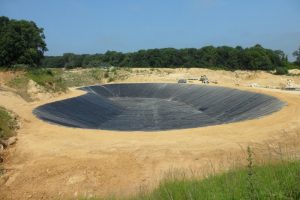
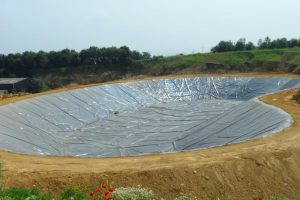
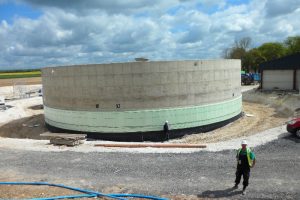
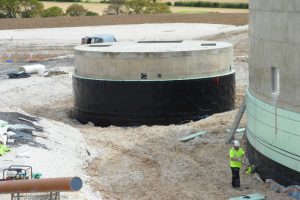
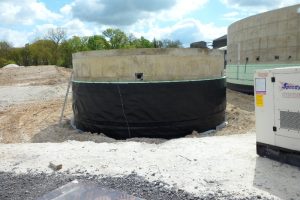
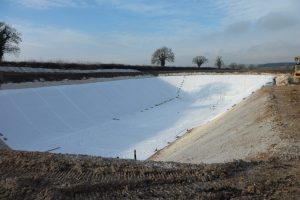

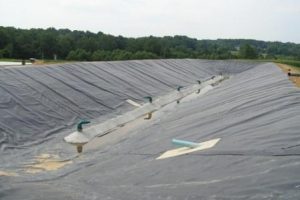
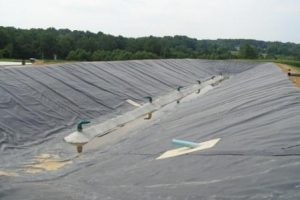
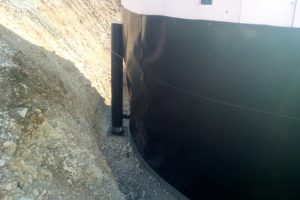
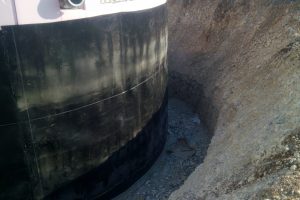
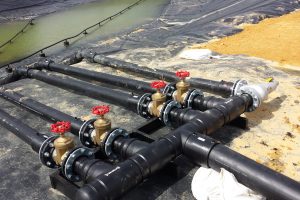
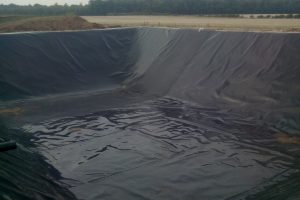
Anaerobic Digestion Waste Management
Anaerobic digestion is a waste management system that has a natural solution to an age old problem. In essence, Anaerobic Digestion utilizes biochemistry to combat the accumulation of waste production. The process has several phases that encompass the use of micro organisms to breakdown biodegradable materials into usable by-products, as well as reducing the overall amount of waste.
Bacterial hydrolysis of waste products is used to breakdown insoluble organic polymers. This makes such polymers vulnerable to other forms of bacteria. Acidogenic bacteria, for example, will transform amino acids and sugars into hydrogen, ammonia and organic acids. In turn, methanogens will transform these elements into carbon dioxide and methane. When combined with other components, the digestion process becomes an integrated waste management procedure.
The process can be applied to commercial, industrial and domestic environments as a practical application for dealing with waste material. The process is clean, efficient and useful.
Indeed, by using specific bacterial agents and formulated chemical compounds, the digestion process can be used to effectively combat many of the hazardous factors that are associated with landfills. A reduction of toxic gasses, for example, is significantly reduced by use of anaerobic digestion. Further, while overall waste production is reduced and harmful effects therein minimized, the digestion process also produces useable materials from the chemical reactions that it generates.
One example is the so-called biogas that is produced from the fumes that emanate from digestion chemical reactions and can be used as fuel. There is also the digestate or the waste material that is produced by the digestion process itself. This ‘digestion waste’ product can be utilized as fertilizer.
What is readily apparent is that anaerobic digestion provides a wealth of benefits.
This includes:
- Easily producible renewable energy source (biogas)
- Reduction of waste materials
- Viable means of organic waste management and elimination
- Landfill toxic gas reduction and odor elimination
- Production of useable materials such as fertilizer
- Reduction of greenhouse gas
Of course, this is just the short list of advantages that are provided by anaerobic digestion. One interesting aspect of anaerobic digestion is the flexibility of the configuration that can be achieved to utilize the process. An anaerobic digestion system can be as large as an industrial sized manufacturing process that includes a complex of digester tanks and associated systems. Or, the process can include only a single holding tank in a domestic setting. The determining factor, essentially, is the need in which the digestion process is to serve.
The only real concern that the digestion process entails is maintaining the integrity of the digester tanks themselves in order to prevent the leakage of potentially environmentally harmful chemicals that are a part of the process. In fact, structural viability of these tanks is a major concern with any anaerobic digestion system.
It is no surprise, therefore, that Enviroseal is able to provide a containment solution that is effective in minimizing these concerns. As a leading provider of containment liners that are highly effective hydraulic barriers, Enviroseal’s geomembrane liners are ideally suited to prevent leakage and offer containment solutions to anaerobic digestion tanks.
Generally, anaerobic digester tanks are constructed out of durable steel and concrete materials. Depending on how these tanks are constructed, they are subject to leaks for a variety of reasons. Enviroseal’s containment liners are versatile and flexible enough to be easily configured to line digester tanks to create an impermeable seal. Further, considering the confluence of chemicals and materials that are a part of the digestion process, any lining material that is utilized must be durable.
With consideration to the toxic nature of the harsh substances involved, Enviroseal typically employs LLDPE, HDPE and polypropylene liners for this type of application. These types of liners possess intrinsic chemical resistance characteristics that make them ideally suited for digester tank lining. Clients should also be aware that our containment liners are compliant and in line with all relevant government regulations concerning environmental safety.
Whether used in a traditional manner or utilized in conjunction with other waste management systems, Enviroseal continues to be the first choice solution to your containment needs.
